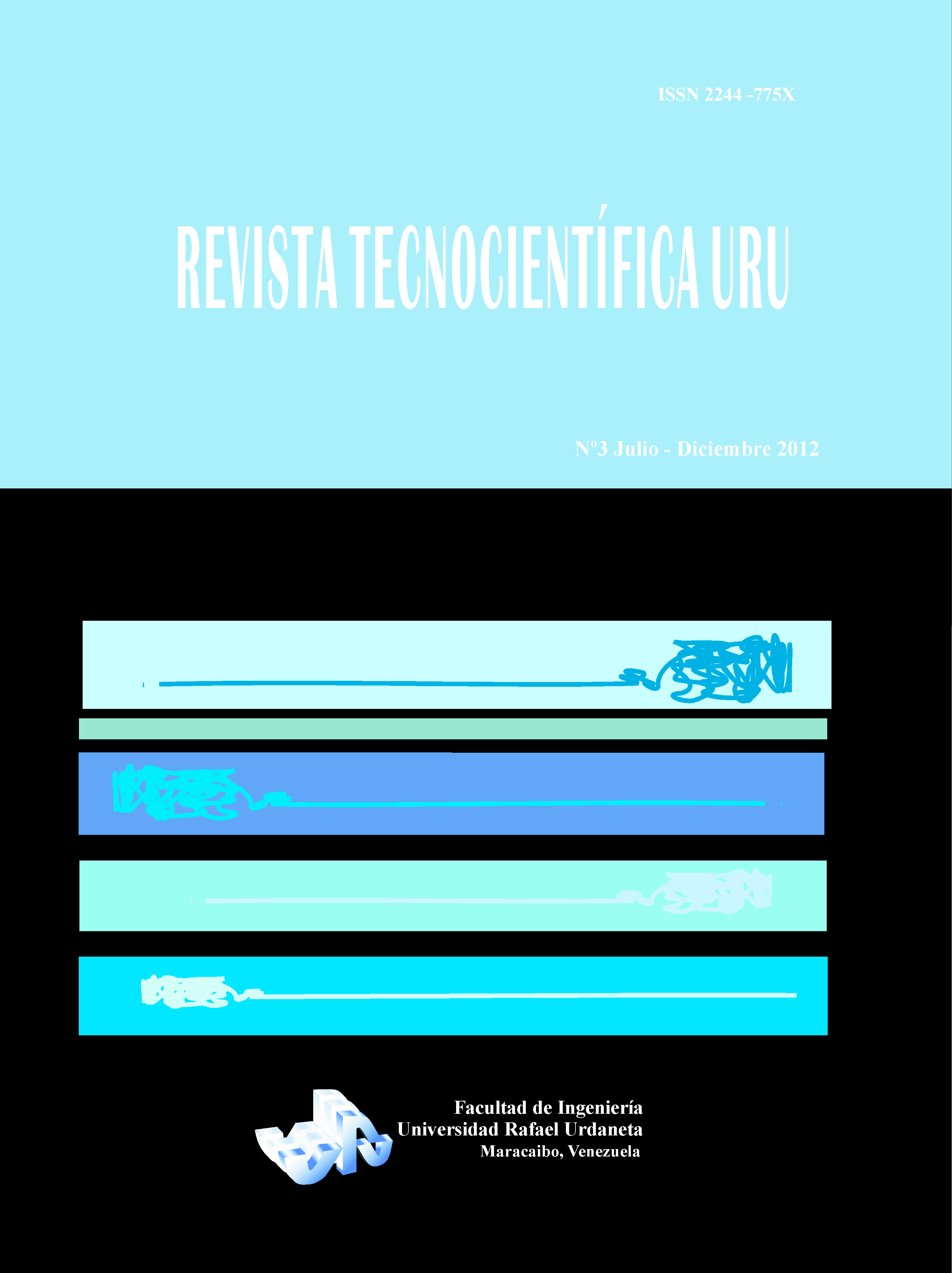Desinfección de aguas residuales de una industria avícola para su reutilización
DOI:
https://doi.org/10.5281/zenodo.15741296Palabras clave:
Desinfección, cloración, reutilización, aguas residuales, industria avícolaResumen
En esta investigación se determinó la eficiencia de un equipo de desinfección con cloro existente en una planta de tratamiento de aguas residuales de una industria avícola, con la finalidad de reutilizar el efluente en la limpieza del área de recepción de aves. Se determinaron los parámetros demanda química de oxígeno (DQO), demanda bioquímica de oxígeno (DBO), sólidos suspendidos totales (SST), sólidos suspendidos volátiles (SSV), nitrógeno total (NT), fósforo (PT), color, turbidez, pH, coliformes totales (CT) y coliformes fecales (CF) a la entra- da y salida de la cámara de cloración. Los parámetros fisicoquímicos a la salida de la cámara cumplieron con lo establecido por las normativas ambientales venezolanas. El equipo de desinfección existente no fue eficiente para remover los parámetros microbiológicos, obteniéndose remociones de 65,22% y 59,51% para CT y CF respectiva- mente, valores que deben alcanzar porcentajes del 99,99% para considerar la reutilización del efluente. La cámara de cloración produce 8 veces el volumen consumido en el área de recepción de aves. Las dimensiones de la cámara de cloración rediseñada son: canal de 0,75 m de alto, 0,2 m de ancho y 73 m de largo, mientras que el tiempo de retención hidráulico fue 33 mín para una dosis de 12,5 mg/L.
Descargas
Referencias
Manios T., Gaki E., Banou S., Klimathianou A., Abramikis N. and Sakkas N. Closed wastewater cycle in a meat producing and processing industry. Resources, Conservation & Recycling, Vol. 38, No. 4, (2003), p. 335-345.
Hammer M. J. and Hammer M. Jr. Water and wastewater technology. 4ta. Ed. USA: Prentice-Hall. (2001).
Liberti L., Notamicola M. and López A. Advanced treatment for municipal wastewater reuse in agri- culture. III - Ozone disinfection, Ozone Sci. Eng., Vol. 22, No. 2, (2000), p. 151-166.
Xu P., Janex M., Savoye P., Cockx A. and Lazarova V. Wastewater disinfection by ozone: main para- meters for process design. Water Research, Vol. 36, No. 4, (2002), p. 1043-1055.
Liberti L., Notamicola M., López A. and Petruzzelli D. Advanced treatment for municipal was-tewater reuse in agriculture. UV disinfection: parasite removal and by-products formation. Desalination, Vo1. 52, No. 1-3, (2002), p. 315-324.
Nardi I., Del Nery V. Amorim A., Dos Santos N. and Chimenes F. Perfermance of SBR, Chemicals- DAF an UV desinfection for poultry slaughterhouse. Dasalination, Vol. 269, No. 1-3, (2011), p. 184- 189.
Winward G., Avery L., Stephenson T. and Jefferson B. Chlorine disinfection of grey water for reuse: Effect of organics and particles. Water Research, Vol. 42, No. 1-2, (2008), p. 483-491.
Gómez-López M., Bayo J., García-Cascales M. y Angosto J. Decision support in disinfection te- chnologies for treated wastewater reuse. Journal of Cleaner Production, Vol. 17, No. 16, (2009), p. 1504-1511.
Romero J. Purificación del agua. Primera Edición. Escuela Colombiana de Ingeniería. (2005).
Pham N. Environmental performance improvement for small and medium-sized slaughterhouse in Vietnam. Environmental, Development and Sustainability, Vol. 8, No. 2, (2006), p. 251-269.
Caldera Y., Gutiérrez E., Luengo M., Chávez J. and Ruesga L. Evaluación del sistema de tratamiento de aguas residuales de industria avícola. Revista Científica, FCV-LUZ, Vol. XX, No. 4, (2010), p. 409-416.
Del Nery V., Damianovic M. and Barros F. The use of upflow anaerobic sludge blanket reactors in the treatment of poultry slaughterhouse wastewater. Water Science & Technology, Vol. 44, No. 4, (2001), p. 83-88.
Nardi, I., Fuzi, T. and Del Nery, V. Performance evaluation and operating strategies of dissolved-air flotation system treating poultry slaughterhouse wastewater. Resources Conservation & Recycling, Vol. 52, No. 3, (2008), p. 533-544.
Matsumura E. and Mierzwa J. Water conservation and reuse in poultry processing plant- A case study review. Resources, Conservation & Recycling, Vol. 52, No. 6, (2008), p. 835-842.
Amorim A., Nardi, I. and Del Nery V. Water conservation and effluent minimization: Case study of a poultry slaughterhouse. Resources, Conservation & Recycling, Vol. 51, No. 1, (2007), p. 93-100.
APHA, AWWA, WCF. Standard methods for examination of water and wastewater. 18th Ed. Wash- ington. DC, USA. (1998).
Arboleda, J. Teoría y práctica de la purificación del agua. Tomo 1. McGraw-Hill Interamericana, S.A. de C.V., 3ra Edición, Colombia. (2000).
Metcalf & Eddy Inc. Wastewater Engineering: Treatment, Disposal and Reuse. 3ra edition. New York. McGraw Hill. (1991).
Gaceta Oficial de la República de Venezuela Nº 5021. Normas para la clasificación y el control de la calidad de los cuerpos de agua y vertidos de efluentes líquidos. Decreto 883. Venezuela. (1995).
Pant A. and Mittal A. Disinfection of wastewater: Comparative evaluation of chlorination and DHS- biotower. Journal of Envioromental Biology, Vol. 28, No. 4, (2007), p. 717-722.
Gaceta Oficial de la República de Venezuela Nº 36395 Normas Sanitarias de Calidad de Agua Pota- ble. Decreto MSAS Nº SG-018-98. Caracas, Venezuela. (1998).
Descargas
Publicado
Número
Sección
Licencia
Derechos de autor 2012 @copyright

Esta obra está bajo una licencia Creative Commons Reconocimiento 3.0 Unported.






